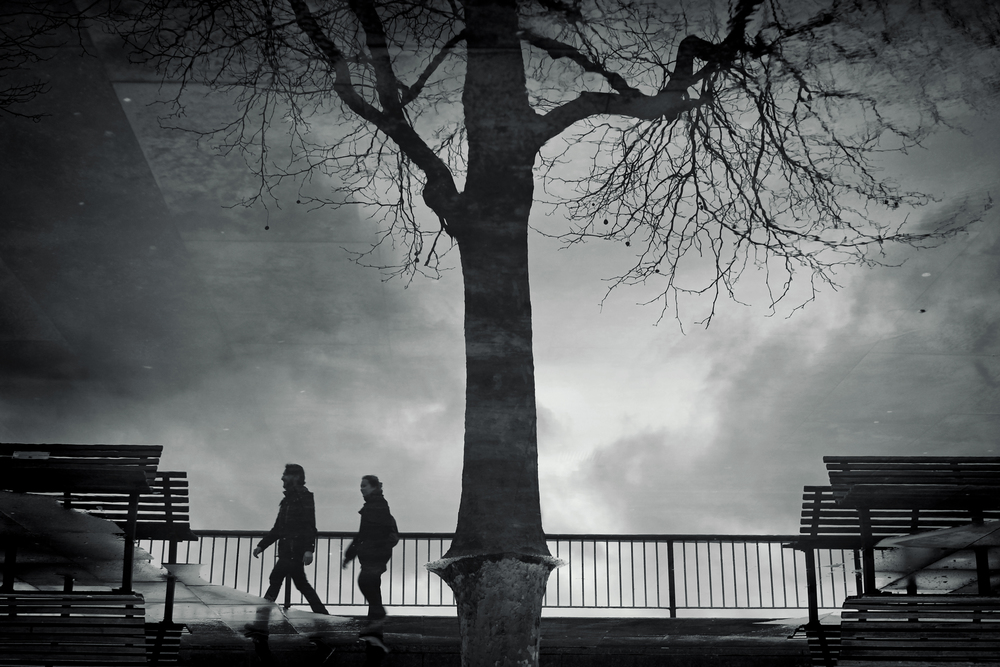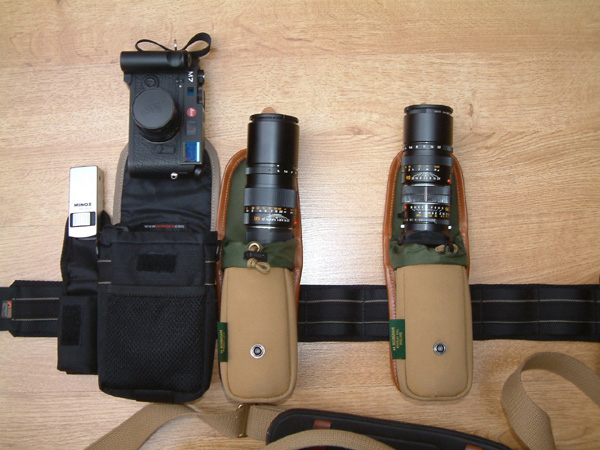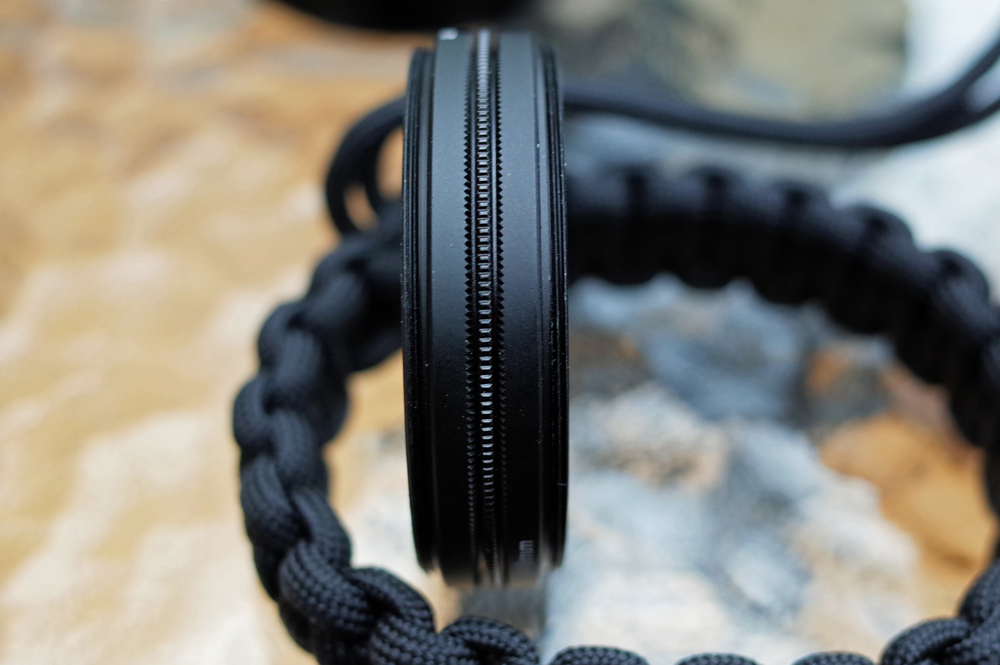
In simple terms there are two types of photographic accessory in the world—the useful and the decorative. In the latter category fall things like Hello Kitty flashguns and selfie sticks and any camera strap that proclaims the brand of your equipment in letters an inch high. In the former, there’s a cornucopia of kit that professes to make our photographic life better—improve our image, so to speak.
The X100T lens is 23mm (35mm equivalent in full-frame terms). The TCL-X100 makes it 33mm (50mm) and the WCL-X100, 18mm (28mm). For consistency and to avoid confusion I will refer throughout this article to the 35mm equivalents, therefore it is 28-35-50mm

For the last few weeks I have been doing two things: Taking part in the Photographers’ Lounge “Single in January” picture-a-day challenge and losing weight. My constant and reliable companion in both of these endeavours has been my Fuji X100T.
Now when the X100 first saw the light of day five years ago it was very much an uncompromising (albeit quirky), what-you-see-is-what-you-get, fixed-lens premium compact capable of high quality outputs in the right hands. Through the S and T iterations the thing that has remained constant is that Fujinon f/2 lens, equivalent to 35mm in old money.
People rightly rave about the straight-out-of-camera jpgs that Fuji produces but they are as much a function of the glass as the sensor and on-board processing. Thirty-five millimetre is a classic focal length, much beloved of the street-shooting fraternity (and their imitators) but not exactly flexible. Of course you can take the proverbial step forward or back, but that is not always practical or advisable.

Fuji decided to resort to proven tech to breathe a bit of optical flexibility into the system by first of all introducing a 28mm equivalent wide-angle, then more recently a 50mm converter—the WCL- and TCL-X100 respectively.

These attach to the front of the existing 35mm lens via a standard 49mm screw thread—male on the camera and female on the adaptor (this has more relevance a little later). I’ve seen such solutions before, notably on the 1960s-era fixed lens compacts from Yashica and others. As an approach it works, although you are introducing additional air-to-glass surfaces into your optical chain with the risk of dust and dirt finding their way in. It’s a risk not present in a “normal” lens.
Still and all, it does work and the X100 series is thus transformed from a standalone single-lens camera to a system, with focal length choices. And talk about compact… Unless you go for the digital crop offered by Ricoh, Leica and now Fuji in the X70, you have about the most compact three-focal-length kit in the market today. Auxiliary lenses have a huge advantage over digital crops, of course. None of the sensor area is wasted; it’s all optical goodness.

For all of January I have been carrying this kit in a Domke F5Xb. It’s just big enough for the camera in a leather half-case, both TCL and WCL converters, a JJB hood, a rolled-up braided leather shoulder strap and the excellent “Cordy Classic” Paracord wrist strap from Cordweaver—plus of course the obligatory two or three spare batteries that every X100 user knows is necessary when stepping outside the house.

It occurred to me that the WCL and TCL, resting as they were on top of one another in the bag, were in danger of damaging each other. What I needed, I thought, was a means by which they could be effectively stacked together. The answer—or at least the principle of the answer—lay in my Leica-owning past.
Leica is the only manufacturer I have ever come across that introduced a “back-to-back coupler”, or coupling ring. This really rather smart device was available at one time for both M and R series lenses and consisted of a simple plastic tube with two lens mounts. Lenses could be joined back to back and stacked thus in tall camera bags without rattling about.
I have already fabricated something similar for my X-series lenses out of two lens caps, an old SD card (just the right size and thickness to go in between to add strength), some strong glue and some black insulating tape to add the finishing touch. With the TCL and WCL and their screw threads it should be even easier, shouldn’t it?

In theory the answer is yes. But it rapidly became apparent that although I could separate the two converters with an old 49mm filter, that wasn’t going to do the trick alone. I needed a male-to-male “gender bender” to make my cunning scheme work. It was eBay that came to the rescue. A suitable coupling ring soon arrived. I suspect it was intended for the reversal of lenses for macro work, but it didn’t matter, it did the job.

Version Mk.1 (2 minutes) was the coupling ring alone. Bit small, bit fiddly. Mk.2 lasted about a week in use—one old sky filter with the glass removed (boy do they shatter…) added a bit of necessary separation, allowing the ring to be gripped firmly when screwing one or the other lens on or off. Still not quite wide enough, so we are now on to Mk.3—two old 49mm sky filters, one either side of the coupling ring, to which the WCL and TCL neatly screw. I also left the glass in this time.This means that I don’t have to worry or faff with additional caps to cover the remaining lens when I mount one or the other to the camera.
Result—two lenses neatly and firmly stowed back to back, easily brought into use. Those rubbishy squishy soft plastic rear caps for the WCL and TCL are confined to their boxes. My rear elements are well protected when not in use, and when one is on the camera, the other doesn’t immediately attract dust and fingerprints. When I am in a real hurry I can just drop it into a pocket as-is. Clever, eh?
Thus, my current daily carry is:
Minimum: X100T with ring and standard lens-cap. One spare battery, one spare SD card. This fits neatly in a coat pocket.
Maximum: As described above. The ring and cap are consigned to the small battery and SD card case, and the JJC hood is mounted. This has the double benefit of rendering a cap largely superfluous (although the standard cap does still fit) and keeps stray fingers away from the front element, particularly in fast-moving street shooting. To change to one of the auxiliary lenses is a matter of unscrewing the hood from the camera and the auxiliary from the back-to-back arrangement, swopping them over and tightening everything up again. Oh… and don’t forget to tell the X100 what you’ve done. I have reassigned the function button on the top plate for this purpose after routinely forgetting. It does make a difference, not just to EXIF but also to in-camera corrections.




Above (left to right): 1) X100T with TCL mounted and WCL and JJC hood on coupling ring; 2) WLC mounted and JJC hood on B2B; 4) All the components separated (click images to expand)
In use, the well-made wide- and tele-converters are all that you would want them to be. Others have reviewed them jointly and severally already to great effect so I don’t intend to repeat that process here, but feel free to have a look at the images from my Single in January “journey” here and see for yourselves. Suffice to say that the X100/S/T that is accessorised by the WCL, TCL or both is a camera that not only increases in usability and flexibility but does not compromise on image quality.
I wouldn’t suggest for a moment that a converter is as good as a prime lens of equivalent focal length, or that screw-thread mounts were not abandoned by all sensible manufacturers years ago for a reason.But if you want a very compact, very competent, take-everywhere travel set-up you don’t have to look any further. My Heath Robinson (Rube Goldberg for those in the US) back-to-back widget simply makes life a bit easier for the travelling(-light) photographer while at the same time is itself robust enough for years of use. No need to thank me. Enjoy!
You can also find Bill Palmer at Rangefound and Lightmancer
You might also enjoy more from Bill on Fuji

One X100-series accessory that I’ve used and love is the $52 Raynox DCR-250 Macro Conversion Lens. Examples: http://bit.ly/1YMTqxF | http://flic.kr/p/oCasxn | http://flic.kr/p/oA93HF | http://flic.kr/p/oAcPmf .
Really like the connector you came up with for the TCL and WCL. I am using the rubbishy squishy soft plastic rear caps with black insulating tape and it is questionable. The 28/35/50 combo is perfect for me and my XT1 stays home most of the time.
thank you,
lynn
You’re very welcome Lynn! I don’t like things banging against each other in camera bags, especially the tall ones like the Billingham Hadley Pro. Now, they have a clever little padded flap to keep things separated top and bottom but that is neither common nor always useful. The squishy plastic caps supplied by Fuji are hopeless, particularly on the WCL; they feel like an afterthought! Anyway glad you like the idea. Show us a picture when you have done it!